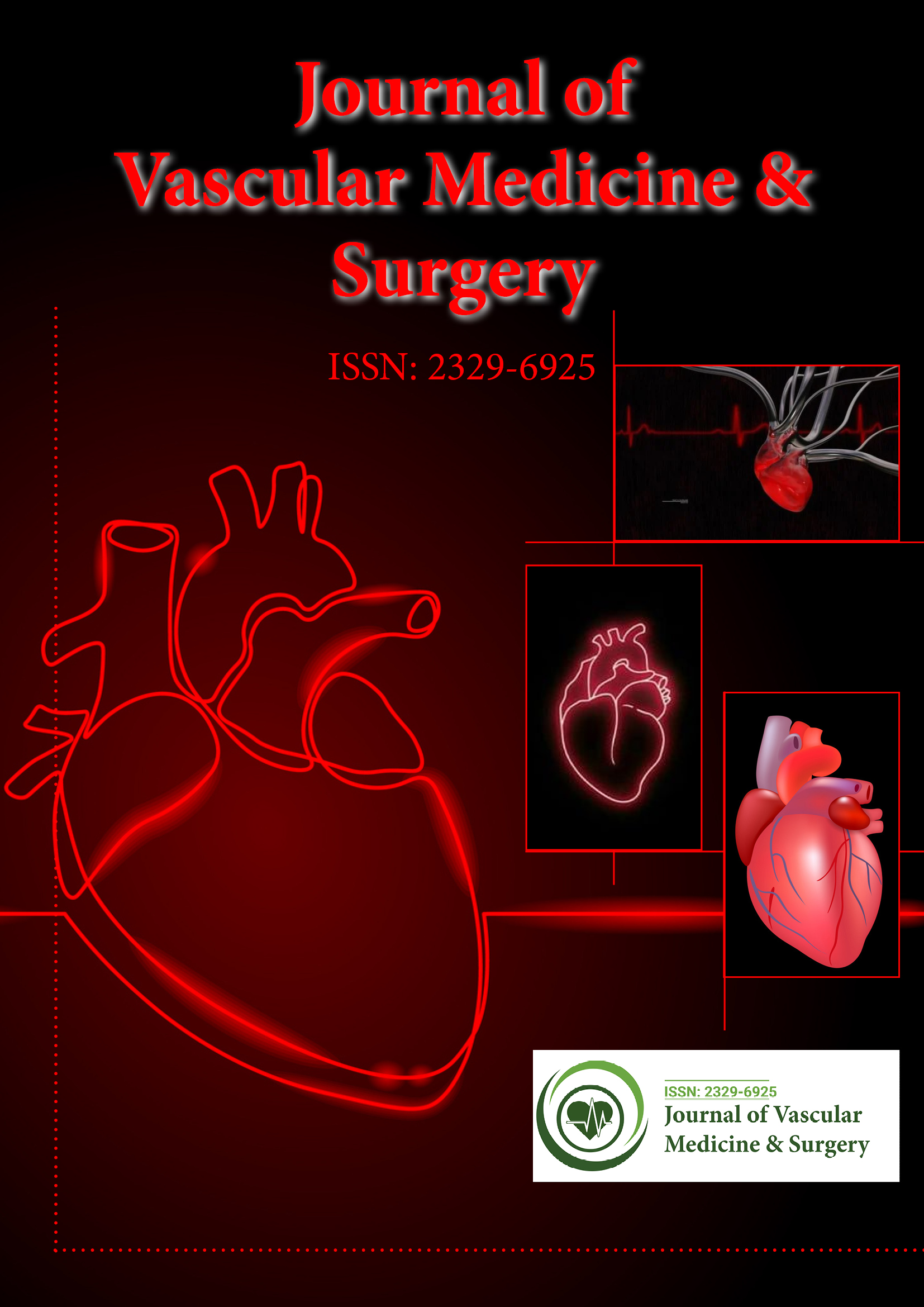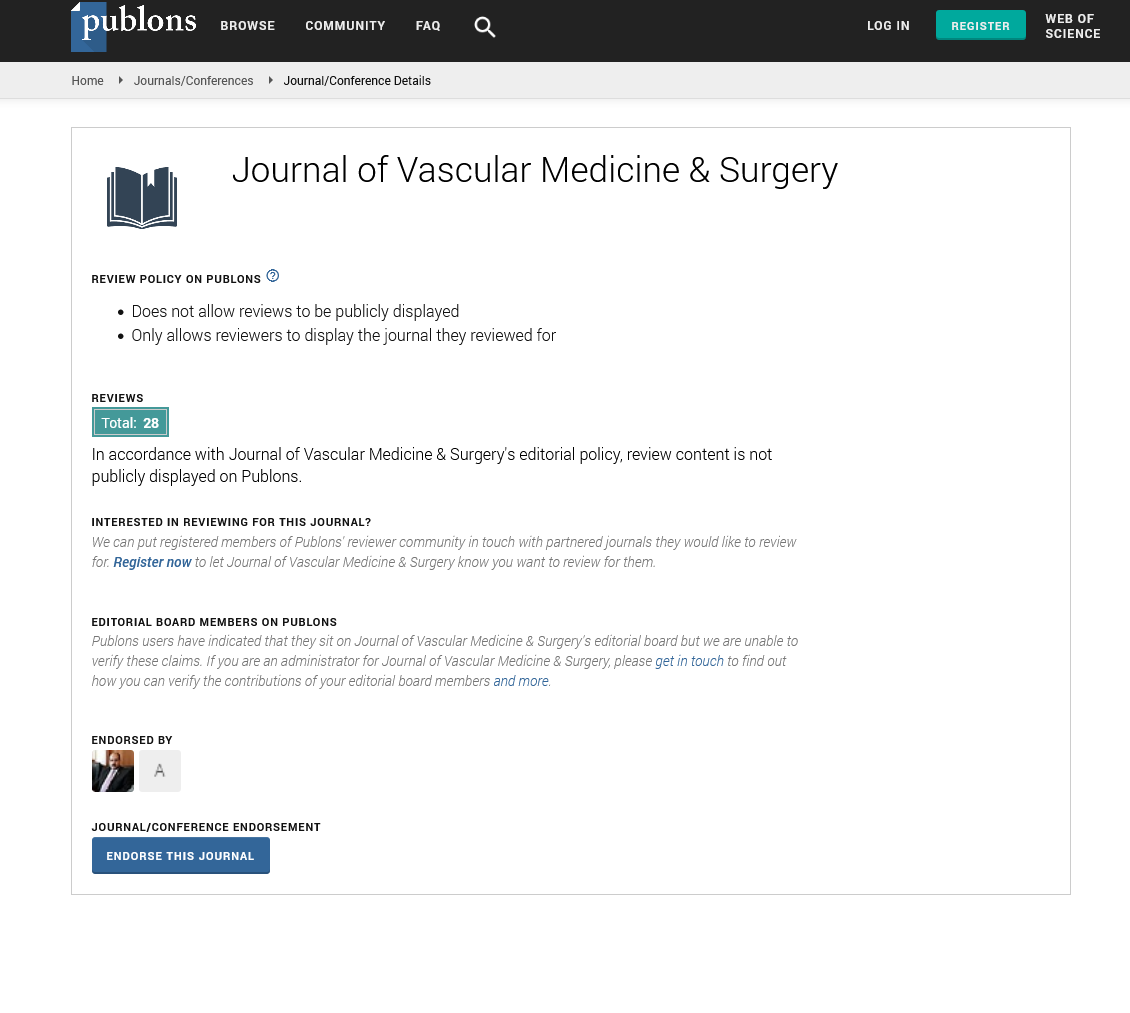Indexed In
- Open J Gate
- Academic Keys
- RefSeek
- Hamdard University
- EBSCO A-Z
- OCLC- WorldCat
- Publons
- Euro Pub
- Google Scholar
- SHERPA ROMEO
Useful Links
Share This Page
Journal Flyer

Open Access Journals
- Agri and Aquaculture
- Biochemistry
- Bioinformatics & Systems Biology
- Business & Management
- Chemistry
- Clinical Sciences
- Engineering
- Food & Nutrition
- General Science
- Genetics & Molecular Biology
- Immunology & Microbiology
- Medical Sciences
- Neuroscience & Psychology
- Nursing & Health Care
- Pharmaceutical Sciences
Commentary - (2025) Volume 13, Issue 7
A Paradigm Shift in Diagnosis: Precision, Speed, and Individualization
Philip Samson*Received: 17-Jun-2025, Manuscript No. JVMS-25-29905 ; Editor assigned: 19-Jun-2025, Pre QC No. JVMS-25-29905 (PQ); Reviewed: 03-Jul-2025, QC No. JVMS-25-29905 ; Revised: 10-Jul-2025, Manuscript No. JVMS-25-29905 (R); Published: 17-Jul-2025, DOI: 10.35248/2329-6925.25.13.607
Description
Vascular diseases, once considered the silent enemies of global health, are now at the center of a medical transformation. As the leading contributors to morbidity and mortality worldwide, these conditions ranging from Peripheral Artery Disease (PAD) and aortic aneurysms to deep vein thrombosis and carotid artery stenosis require not only early detection but also tailored treatment. With the advancement of diagnostic technologies, we are entering a new era where the traditional methods of identification and classification are giving way to faster, more precise, and patient-specific approaches.
In recent years, non-invasive imaging has undergone dramatic evolution. The reliance on Doppler ultrasound, while still central, has been expanded with the integration of high-resolution MRI angiography, CT angiography, and even hybrid PET/CT scans that can detect vascular inflammation at a molecular level. These innovations allow clinicians not just to visualize the structural abnormalities of vessels, but to assess functional and biochemical changes that precede clinical symptoms. Such progress shifts diagnosis from a reactive to a proactive stance, identifying high-risk patients before events like strokes or critical limb ischemia occur.
Artificial Intelligence (AI) and machine learning are also playing pivotal roles. AI algorithms trained on large datasets can now analyze imaging studies with remarkable accuracy, often identifying subtle signs of vascular compromise that human eyes may overlook. These systems are also aiding in risk stratification by integrating patient history, genetic predisposition, lifestyle factors, and imaging results to offer a more comprehensive vascular risk profile. This individualization of diagnostic pathways not only improves accuracy but also accelerates decision-making, potentially saving lives in emergency settings.
Moreover, the rise of wearable technology and remote monitoring tools is opening new doors in early detection. Patients with known vascular risk can now be monitored in real time for changes in blood pressure, heart rate variability, or even peripheral perfusion. These devices feed continuous data into cloud-based platforms that alert providers to subtle deteriorations, offering opportunities for timely intervention long before symptoms manifest.
Collectively, these diagnostic advancements are shifting the conversation from simply identifying disease to predicting it. The earlier we can identify at-risk patients, the more effective our interventions become. This represents a profound paradigm shift one that moves vascular medicine into the realm of precision diagnostics and preemptive care.
Innovations in treatment from invasive to intelligent interventions
Parallel to the evolution in diagnostics, the treatment of vascular diseases is experiencing its own revolution. For decades, surgical bypasses and open repairs dominated the therapeutic landscape. While still vital in many cases, the focus has now pivoted toward less invasive, more durable, and smarter interventions that not only treat disease but aim to restore long-term vascular health.
Endovascular therapies using catheters and imaging guidance to treat diseased vessels from within have become the gold standard for many conditions. Whether it’s the deployment of drug-eluting stents in peripheral artery disease, the use of coil embolization in aneurysm management, or catheter-directed thrombolysis in venous thrombosis, these approaches offer reduced hospital stays, lower complication rates, and faster recovery compared to traditional surgery. As device technology improves, so does the efficacy and safety of these procedures.
A particularly exciting development is the use of Bioresorbable Vascular Scaffolds (BVS). Unlike permanent metal stents, BVS are designed to gradually dissolve after restoring blood flow, reducing long-term risks such as in-stent restenosis and thrombosis. These devices represent a more physiologic approach to vascular healing, acknowledging the need for temporary support rather than permanent implants.
Gene therapy and regenerative medicine also hold promise in treating complex vascular conditions. It is increasingly focused on using genetic modifications to stimulate angiogenesis—the formation of new blood vessels—in ischemic tissues, potentially offering hope for patients with critical limb ischemia who are not candidates for conventional revascularization. Stem cell therapy is another area gaining traction, with early clinical studies suggesting that autologous stem cell injections can improve microvascular function and promote tissue regeneration.
Furthermore, pharmacologic treatment is becoming more targeted and personalized. Antiplatelet and anticoagulant therapies are being refined with better understanding of individual genetic responses and drug interactions. The use of pharmacogenomics to guide medication choice and dosage is a step toward reducing adverse effects while maximizing efficacy. Similarly, lipid-lowering therapies have gone beyond statins, with new classes such as PCSK9 inhibitors offering powerful tools in stabilizing atherosclerotic plaque and reducing vascular events.
Another major shift in treatment is the growing emphasis on lifestyle integration and digital therapeutics. Patients are now part of a digitally connected ecosystem that includes mobile apps, virtual health coaching, and AI-powered reminders for medication adherence, physical activity, and dietary changes. These tools enhance long-term compliance and behavior modification, which are crucial in managing chronic vascular conditions.
Conclusion
The horizon in vascular medicine is expanding rapidly. Once a field constrained by invasive diagnostics and limited treatment options is now blossoming into a domain marked by precision, minimally invasive interventions, digital health integration, and personalized care. The convergence of technology, biology, and data science is reshaping the way we diagnose and treat vascular diseases offering new hope for patients and new possibilities for clinicians.
Citation: Samson P (2025). A Paradigm Shift in Diagnosis: Precision, Speed, and Individualization. J Vasc Surg. 13:607
Copyright: © 2025 Samson P. This is an open-access article distributed under the terms of the Creative Commons Attribution License, which permits unrestricted use, distribution and reproduction in any medium, provided the original author and source are credited.

